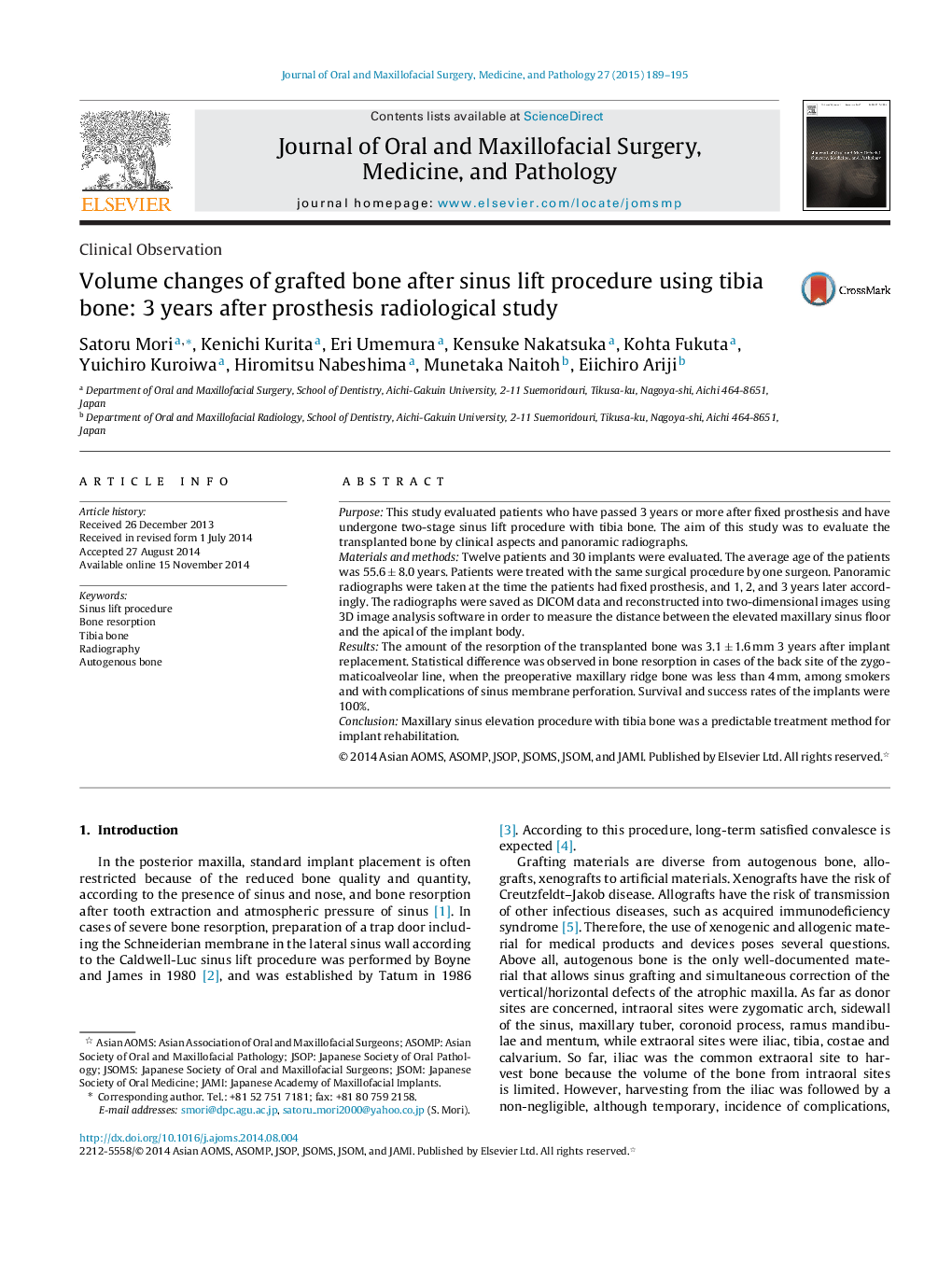| Article ID | Journal | Published Year | Pages | File Type |
|---|---|---|---|---|
| 3160520 | Journal of Oral and Maxillofacial Surgery, Medicine, and Pathology | 2015 | 7 Pages |
PurposeThis study evaluated patients who have passed 3 years or more after fixed prosthesis and have undergone two-stage sinus lift procedure with tibia bone. The aim of this study was to evaluate the transplanted bone by clinical aspects and panoramic radiographs.Materials and methodsTwelve patients and 30 implants were evaluated. The average age of the patients was 55.6 ± 8.0 years. Patients were treated with the same surgical procedure by one surgeon. Panoramic radiographs were taken at the time the patients had fixed prosthesis, and 1, 2, and 3 years later accordingly. The radiographs were saved as DICOM data and reconstructed into two-dimensional images using 3D image analysis software in order to measure the distance between the elevated maxillary sinus floor and the apical of the implant body.ResultsThe amount of the resorption of the transplanted bone was 3.1 ± 1.6 mm 3 years after implant replacement. Statistical difference was observed in bone resorption in cases of the back site of the zygomaticoalveolar line, when the preoperative maxillary ridge bone was less than 4 mm, among smokers and with complications of sinus membrane perforation. Survival and success rates of the implants were 100%.ConclusionMaxillary sinus elevation procedure with tibia bone was a predictable treatment method for implant rehabilitation.
